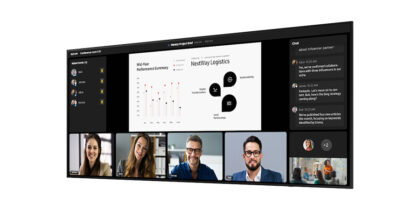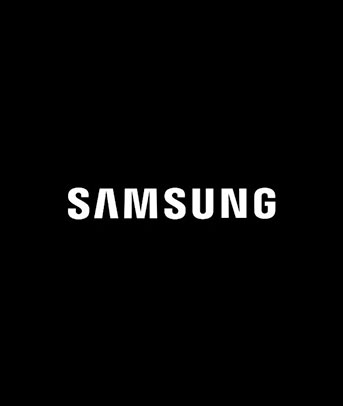The best meetings between colleagues come from collaboration. Video walls work to achieve this positive outcome by providing tools for communication, projecting visions in high resolution and increasing touchpoints for active engagement — making their instillation in a meeting or conference room a lucrative investment.
Reaping these collaborative rewards, however, also depends on video wall integration with the existing AV infrastructure in the space, and that requires more than just mounting the display, plugging it in and switching it on. In fact, the integration starts before the display is even purchased and factors in the specific needs and goals of the businesses employing the video wall.
Here’s what you need to know to successfully integrate a video wall into your office AV system.
Choosing the right display type
The first step to successfully integrating a video wall with the office AV system and reaping the rewards means choosing the right one for your needs — not just the biggest or latest model. The space it will operate in is a key consideration. A supersized display, such as Samsung QPDX-5K Series 105″, can make team meetings and sharing information easier in a large one but could overwhelm in a small. That’s why the size, distance and viewing angles of the audience needs to be factored into the decision. The same goes for resolution, which needs to scale up with the size of the screen.
The next key consideration is what you want your video wall to do. Presentations? Training seminars? Virtual meetings? All of the above? The wider the scope, the wider the screen should probably be, so it can accomplish all of these things at the same time. Because it has a 21:9 aspect ratio, the QPDX-5K can contain a number of separate screens, slides, graphics and streams at the same time.
Mounting types matter, too, since smaller rooms require flush mount options. Here, too, Samsung QPDX-5K excels, thanks to a mere 48.1mm depth and outward facing ports. So, it can be installed with flush wall mounting.
Integrating a video wall with the current AV system
Once you’ve decided on a the best video wall for your AV system, it’s time to think about what you’re going to connect it to — and whether you’ve got the right connectivity. If your video wall is the linchpin of your conference room, you may need to connect it to existing technology and infrastructure, such as dedicated video conferencing equipment or server.
For video, Samsung QPDX-5K Series 105-inch display offers a number of options. One of its key features is SMARTVIEW+, which enables wireless screen-sharing and supports up to 10 screens at once for seamless collaboration. Plugging in an OPS module or bracket into the OPS port is another option, as it transforms the display into a Windows device — eliminating the need for additional PCs or devices and letting users run their preferred software directly on the QPDX-5K.
How to plan and deploy direct view LED signage
Everything you need to know about choosing your LED displays for optimal viewing indoors and out. Download Now
Samsung VXT content management system dramatically expends the display’s content capabilities, too. It offers robust content-making tools and templates, and, as it’s cloud-based, that content can also be stored and accessed remotely, making integration easy with the video wall. Because of that, it’s also not necessary to be in the room physically to manage and control the content, which makes the range of integration almost infinite.
Because audio is often just as important as video, it’s important to consider how to merge any new video wall to existing external speakers, soundbars and microphones with your new video wall. Samsung QPDX-5K Series display enables this with three HDMI 2.1 outputs, a display port 1.4, a stereo minijack and USB-C port. The last levels up the connection further by enabling data transfer, video output and power delivery through the same cable.
Troubleshooting common issues
Many common issues with video walls can be address through setting the best scene possible for the display to look its best — and clearest. This means putting it optimal position in the room, audience distance and eye angle, as well as reducing ambient light and sound.
Other issues can be handled easily onscreen in most cases. This is enhanced by upgraded home screen user interface (UI), which opens with a simple tap and displays favorites, sources and settings all in one place. When Samsung VXT is integrated, any fine-tuning and troubleshooting of content issues can take place from any linked device anywhere.
Additional common problems include:
- Content is not filling the screen: Your source output may not match the 21:9 aspect ratio of QPDX-5K’s or its 5K resolution. Simply make sure your application is set to these specifications.
- Display is too bright or dim: Access the display settings through the UI and adjust to desired level.
- Audio or video signals begin skipping: Check cables for damage or corrosion, or whether they are the old versions of HDMI. In both cases, replacements are required.
- Wireless won’t connect or drops out: Run test of Wi-Fi signal through display. This usually clears any bugs and resets the signal
- Video wall begins to sag or tilt: Check if screws conform to wall mount kit specifications, matching the right length to the screen size, as per instillation instructions.
Optimizing team collaboration with displays
When it comes to optimizing team collaboration, few pieces of hardware can make as big a difference as a video wall, especially when it brings the tools and features of Samsung QPDX-5K Series 105″. Not only does it help bring more voices to the table when fully integrated with the office AV system, it amplifies them in ways that enhance resonance and impact. In other words, video walls help maximize the team in teamwork.
Learn more about how Samsung QPDX-5K Series 105″ can scale up your meetings, and discover the magic of VXT.








